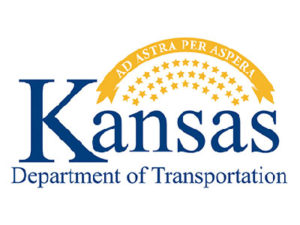As Colorado River states await water cuts, they struggle to find agreement on longer-term plans

FILE - The Colorado River in the upper River Basin is seen, May 29, 2021, in Lees Ferry, Ariz. (AP Photo/Ross D. Franklin, File)
By SUMAN NAISHADHAM Associated Press
WASHINGTON (AP) — The federal government is expected to announce water cuts soon that would affect some of the 40 million people reliant on the Colorado River, the powerhouse of the U.S. West. The Interior Department announces water availability for the coming year months in advance so Western cities, farmers and others can plan.
Behind the scenes, however, more elusive plans are being hashed out: how the basin will share water from the diminishing 1,450-mile (2,334-kilometer) river after 2026, when many current guidelines that govern it expire.
The Colorado River supplies water to seven Western states, more than two dozen Native American tribes, and two states in Mexico. It also irrigates millions of acres of farmland in the American West and generates hydropower used across the region. Years of overuse combined with rising temperatures and drought have meant less water flows in the Colorado today than in decades past.
That’s made the fraught politics of water in the West particularly deadlocked at times. Here’s what you need to know about the negotiations surrounding the river.
WHAT ARE STATES DISCUSSING?
Plans for how to distribute the Colorado River’s water after 2026. A series of overlapping agreements, court decisions and contracts determine how the river is shared, some of which expire at the end of 2025.
In 2007, following years of drought, the seven U.S. states in the basin — Arizona, Nevada, California, Colorado, New Mexico, Utah and Wyoming — and the federal government adopted rules to better respond to lower water levels at Lake Mead and Lake Powell. Those are the river’s two main reservoirs that transfer and store Colorado River water, produce hydropower and serve as barometers of its health.
The 2007 rules determine when some states face water cuts based on levels at Lake Mead. That’s why states, Native American tribes, and others are drafting new plans, which anticipate even deeper water cuts after 2026 based on projections of the river’s flow and climate modeling of future warming in the West.
“The ultimate problem is that watershed runoff is decreasing due to an ever-warming climate,” said Jack Schmidt, professor of watershed sciences at Utah State University, and director of the Center for Colorado River studies. “The proximate problem is we’ve got to decrease our use.”
HOW ARE THESE TALKS DIFFERENT FROM EXPECTED CUTS THIS MONTH?
Sometime this month, the federal government will announce water cuts for 2025 based on levels at Lake Mead. The cuts may simply maintain the restrictions already in place. Reclamation considers factors like precipitation, runoff, and water use to model what levels at the two reservoirs will look like over the following two years. If Lake Mead drops below a certain level, Arizona, California, Nevada and Mexico are subject to cuts, though California has so far been spared because of its senior water rights.
In recent years, Arizona has faced the bulk of these cuts, while Mexico and Nevada also saw reductions. But these are short-term plans, and the guidelines surrounding them are being renegotiated for the future.
WHAT ARE STATES ALREADY DOING TO CONSERVE WATER?
Arizona, Nevada and Mexico faced federal water cuts from the river in 2022. Those deepened in 2023 and returned to 2022 levels this year. As the crisis on the river worsened, Arizona, California and Nevada last year agreed to conserve an additional 3 million acre-feet of water until 2026, with the U.S. government paying water districts and other users for much of that conservation.
Colorado, New Mexico, Utah and Wyoming — the state’s so-called Upper Basin — don’t use their full 7.5 million acre-foot allocation from the river, and get a percentage of the water that’s available each year.
An acre-foot is enough water to serve roughly two to three U.S. households in a year.
HAVE THESE EFFORTS WORKED?
Yes, for now. A wet 2023 plus conservation efforts by Lower Basin states improved the short-term outlook for both reservoirs. Lake Powell is at roughly 39% capacity while Mead is at about 33%.
Climate scientists and hydrologists say that higher temperatures driven by climate change will continue to reduce runoff to the Colorado River in coming years, and cause more water to be lost to evaporation, so future plans should prepare for less water in the system. Brad Udall, a senior water and climate scientist at Colorado State University, said predicting precipitation levels is harder to do.
The short-term recovery in the Colorado River basin should be viewed in the context of a more challenging future, he added.
“I would push back heartily against any idea that our rebound over the last couple of years here is some permanent shift,” Udall said.
WHAT CAN’T STATES AGREE ON?
What to do after 2026. In March, Upper and Lower Basin states, tribes and environmental groups released plans for how the river and its reservoirs should be managed in the future.
Arizona, California and Nevada asked the federal government to take a more expansive view of the river management and factor water levels in seven reservoirs instead of just Lake Powell and Lake Mead to determine the extent of water cuts. If the whole system drops below 38% capacity, their plan said, deeper cuts should be shared evenly with the Upper Basin and Mexico.
“We are trying to find the right, equitable outcome in which the Upper Basin doesn’t have to take all of the pain from the long-term reduction of the river, but we also can’t be the only ones protecting Lake Powell,” said Tom Buschatzke, director of Arizona’s Department of Water Resources and the state’s lead negotiator in the talks.
Colorado, New Mexico, Utah and Wyoming called for addressing shortages based on the combined capacity of Lake Powell and Lake Mead, as opposed to just Lake Mead. It proposed more aggressive cuts that would affect California, Arizona and Nevada sooner when the major reservoir levels fall. Their plan doesn’t call for reductions in how much water is delivered to Upper Basin states.
Becky Mitchell, the lead negotiator for the state of Colorado, said the Upper Basin’s plan focuses more on making policy with an eye on the river’s supply, rather than the demands for its water.
“It’s important we start acknowledging that there’s not as much water available as folks would like,” Mitchell said.
WHERE DOES IT GO FROM HERE?
The federal government is expected to issue draft regulations by December that factor in the different plans, and propose a way forward. Until then, states, tribes and other negotiators will continue talking and trying to reach agreement.
___
The Associated Press receives support from the Walton Family Foundation for coverage of water and environmental policy. The AP is solely responsible for all content. For all of AP’s environmental coverage, visit https://apnews.com/hub/climate-and-environment









